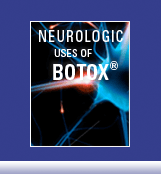 What is Neuropathic Pain?
What is Neuropathic Pain?
In nature, pain is supposed to be a response to a noxious stimulus to teach us to not do whatever we did that caused the pain in the first place. Pain is sensed by small fibers in the peripheral nervous system. They relay the information to the spinal cord and then to the brain. Most pain medications that we think of - tylenol, aspirin, ibuprofen, codeine, morphine, and other narcotics, are tested in models of pain that do not involve damage to the peripheral nervous system itself. Common pain models include skin trauma, orthopedic surgery, childbirth, and kidney stones.
When neurologists think of neuropathic pain, we are reffering to pain being caused by the peripheral nerve fibers themselves. Descriptions of neuropathic pain by patients typically include words such as burning, shooting, stabbing, or electric like and not aching or crushing. The distribution of pain will be along the course of a particular peripheral nerve or a group of nerves of similar length. For neuropathic pain, non-narcotic pain relievers are generally not helpful. Narcotic pain relievers typically have initial success but typically patients have to keep increasing the dose. I am not aware of any narcotic medications being approved for neuropathic pain by the FDA. Neurologist have learned that other types of medications - such as tricyclic antidepressants, serotonin and norepinephrine reuptake inhibitor (SSNRIs) and some anti-epileptic drugs (AEDs) are very useful in this type of pain. Topical anesthetics can also be useful. The approach to a patient with neuropathic pain when seen by a neurologist will be very different when seen by physicians who consider themselves pain specialists.
Treating Neuropathic Pain
The following are the medications currently FDA approved for neuropathic pain and their indications. Gabapentin or Neurontin is FDA approved for post-herpetic neuralgia. Duloxetine or Cymbalta is FDA approved for painful diabetic peripheral neuropathiy. Carbamezepine or Tegretol or Carbatrol is FDA approved for facial pain. Pregabalin or Lyrica is FDA approved for post-herpetic neuralgia and painful diabetic peripheral neuropathy. Lidoderm - a topical anesthetic - is FDA approved for post-herpetic neuralgia. It is common for physicians to use all of these medications for any pain that sounds neuropathic. We typically choose the first medication to try based upon side effect profile and cost since it is not clear which medication is more effective for most patients. Other commonly used medications include Amitriptyline and other anticonvulsants such as keppra, trileptal, and zonegran.
Causes of Neuropathic Pain
Some of the most frequent causes of neuropathic pain are related to diabetes or the result of having the shingles however any shooting, stabbing, or burning type pain in the distribution of a particular nerve can benefit from the same treatment approach. It is important to try to identify the cause of the nerve injury and fix it where possible. Unfortunately, this is not usually possible.



